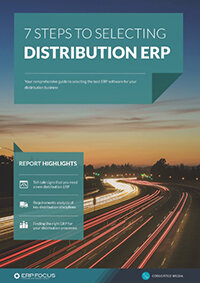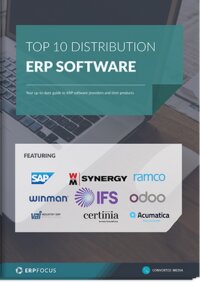Demand more from your demand management ERP module
Is your distribution business going round and round in circles (and not because your route management application told you to)? It could be a sign that you need an ERP with better demand management applications.
Demand is rarely something that just shows up when your customer places an order. Distribution ERP should have a database of past orders with customer and order data in an “easy-to-query” format. If this is the case, you will have spotted some clues to future demand as you listened to your customers talk about their plans and upcoming promotions. But these clues don’t equal a true forecast; to achieve that, you will need to select a distribution system which has the latest demand management functionality.
Flexible and automated demand modelling
Distribution ERP can collect and summarize your data by products and customers, process the data and find a model that fits to create a demand forecast. Using historical data and the latest statistical models, your ERP software could change many of your previous hunches into well-informed decisions.
Compare leading distribution ERP solutions with our free ERP comparison tool
You may also want to look for an ERP which allows you to test different models and datasets within the demand forecasting module. Group your products to see if the demand model is better than your results for individual products; group your customers into categories as well. The results for “all restaurants” might be more valuable than any single restaurant client.
Supplier integration
If the pressures in your business reside at the supply, rather than demand, end of the scale, a good solution is to find an ERP that can integrate with your supplier systems. If your suppliers can provide all you need on time to meet your demand, you are in good shape. But when your ERP system finds a disconnect, you can take action. Can you find an alternate product you might not carry now that will satisfy your customers? Can you help your customers reshape their orders by moving promotions earlier or later in your schedule? Managing distribution demand means you are working on both the demand and supply side to keep them in balance, your ERP system should be helping you.
Demand financials
If you implement an ERP system which provides a managed demand model (as discussed earlier), you can predict revenue, cost of sales, and cash flow with reasonable confidence. Will you have excess cash for a time? Will you need to borrow to maintain your current assets? The answer to these questions can have such a big impact on the financial health of the business that a return on this feature is a strong possibility.
Workforce scheduling
If business is light today but a spike in demand is approaching in three months, ERP can suggest workforce schedules to accommodate the peaks and troughs in labor demand. If you see you will be short of the number of workforce required to meet demand forecasts, you will be able to take action to correct the situation. Should you arrange for temporary workers? If you plan to hire people, begin early, as it takes time and effort to find the right people and then more time to train them properly.
On every level, distribution ERP can help your demand management. These are just a few features to look for in during your system selection process, so remember to tailor your search to your requirements.
Free white paper

7 steps to selecting distribution ERP
Get expert advice on distribution ERP selection and requirements analysis

Featured white papers
-

Top 10 Distribution Software Comparison
Compare the best distribution ERP systems available today
Download -

Top 10 Transportation ERP Software Comparison
Get your free comparison of the top 10 transportation ERPs
Download -

7 steps to selecting distribution ERP
Get expert advice on distribution ERP selection and requirements analysis
Download
Related articles
-

ERP for Food Distributors: Key Functionality
In a modern world where products are tailored to consumers, why should ERP for food distributors ...
-

CMMC Compliance: What Aerospace and Defense Manufacturers Need to Know
Key insights on CMMC compliance, deadlines, and securing DoD contracts with CMMC 2.0 certificatio...
-

ERP & Logistics: Optimizing the Supply Chain
Read about the steps you can take to optimize your supply chain through ERP software logistics ma...

